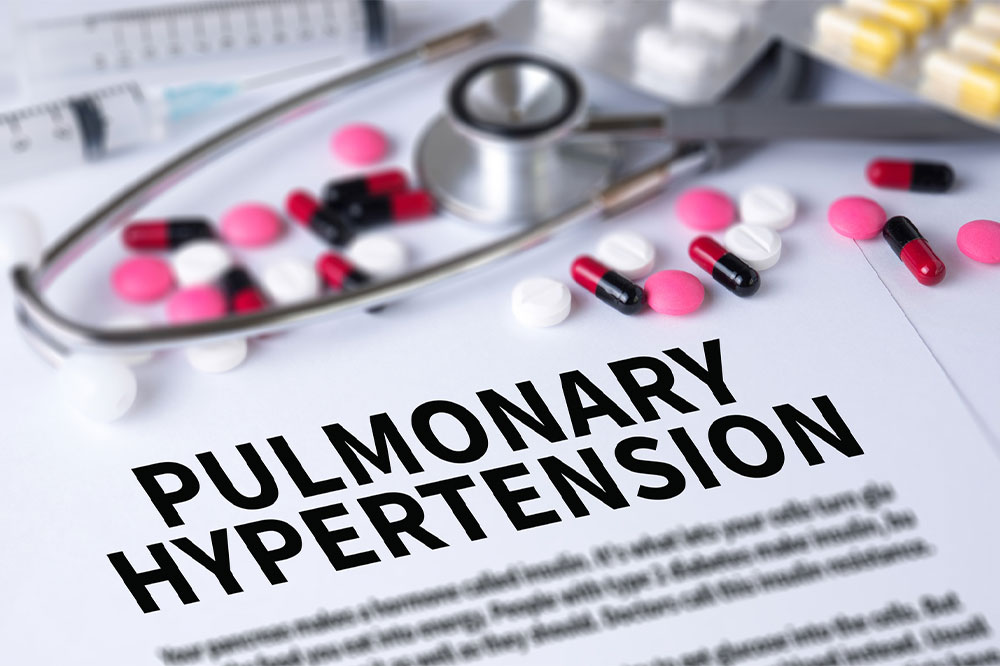
Pulmonary hypertension – Its types and causes
Pulmonary hypertension is a health condition in which the lungs suffer because of an increase in blood pressure. It is an umbrella term covering various types of pulmonary hypertension. The condition often worsens over time; that said, certain forms of therapy can alleviate symptoms and improve quality of life. WHO has classified it into five categories. The cause of pulmonary hypertension in patients is mentioned below.
Pulmonary Arterial Hypertension (PAH)
Pulmonary hypertension is divided into multiple types, of which group one is Pulmonary Arterial Hypertension (PAH). It occurs when the arteries located in the lungs turn stiff, thick, or narrow because of cholesterol deposition. In the case of PAH, the heart’s right side is forced to work harder than usual to ensure that blood passes the narrow arteries and reaches its destination. The extra stress faced by the cardiac organ can eventually lead to its weakening and inability to pump blood through the respiratory system and deliver it to the rest of the body.
PAH is further divided into idiopathic pulmonary arterial hypertension and heritable pulmonary arterial hypertension. The cause of idiopathic PAH is not known clearly and can be difficult to diagnose at an early stage. As the name suggests, heritable PAH is associated with genes and predisposition to certain medical conditions. Patients with medical conditions like liver diseases, congenital heart diseases, HIV, lupus, and more are at an increased risk of developing PAH. There are ways to help prevent or manage PAH; however, there is no cure for the condition.
Pulmonary hypertension due to left heart disease
The second category or the group two of different types of pulmonary hypertension is that caused by left heart disease. In this type, the arteries of the patient’s lungs are not as stiff as they are in the case of PAH. However, patients falling in group two tend to face issues with their cardiac function. The problem occurs with the valve on the left side of the heart or the contraction and relaxation of the heart. This causes the blood to flow back into the lungs, causing regurgitation and increasing blood pressure in the lungs. This type of pulmonary hypertension is the most common type seen in patients.
Pulmonary hypertension due to lung disease
As the name suggests, people who develop pulmonary hypertension because of an underlying condition associated with the lungs fall under group three of WHO’s pulmonary hypertension classification. This can include conditions caused by low oxygen levels (hypoxia) and chronic lung diseases. Conditions like chronic obstructive lung disease, wherein the airways narrow down and make breathing difficult, are also included in the risk factors. Pulmonary fibrosis or interstitial lung diseases, in which the lungs cannot expand as much as they should, can also contribute to an increased risk of pulmonary hypertension. Other factors include being at a high altitude for a prolonged time and sleep apnea. All these conditions constrict the blood supply to limited areas of the lungs, eventually leading to hypertension.
Pulmonary hypertension due to chronic blood clots in the lungs
Chronic Thromboembolic Pulmonary Hypertension (CTEPH) is the fourth type. This type of pulmonary hypertension results when the body fails to dissolve a blood clot formed or found in the lungs. This inability to dissolve a clot can lead to scar tissue formation and can cause blockage in the lung arteries—this blockage results in restricted blood flow and increased pressure on the right side of the heart. Like we saw earlier, the pressure to work harder gradually weakens the heart muscles. However, unlike most other types of pulmonary hypertension, this type can be managed by pulmonary thromboendarterectomy or PTE surgery. This procedure helps remove clots from the lungs and their arteries, helping restore normal blood flow and pressure. That does not mean that all CTEPH patients are eligible for this surgery. Other options are available for patients who do not qualify for PTE procedures or did not benefit from them. These options are to be determined with consideration and elaborate discussions with professional health care providers.
Pulmonary hypertension due to unknown causes
The last group in the pulmonary hypertension category includes patients whose cause of the condition isn’t clearly determined. This includes the development of pulmonary hypertension as a secondary condition. This can be associated with conditions like sickle cell anemia, metabolic disorders, spleen removal, sarcoidosis, and more. The options to manage this condition are determined by a medical practitioner based on the patient’s medical history. Their primary method of controlling the condition will be combined with other options that help relieve the pulmonary pressure and prevent further complications.




